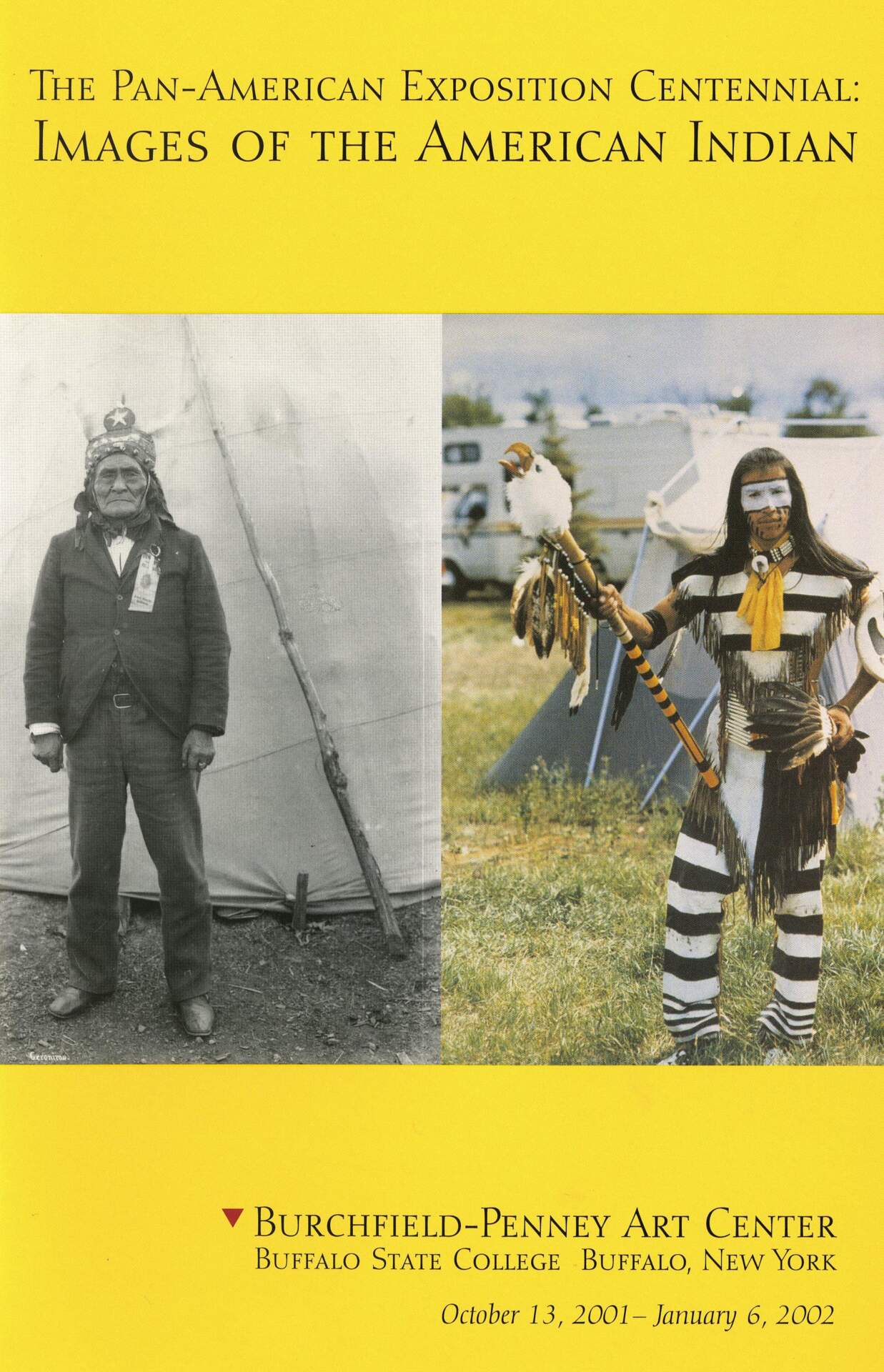
Cover of The Pan-American Exposition Centennial: Images of the American Indian, 2001, exhibition catalog. Image courtesy of the Burchfield Penney Art Center Archives.
The Pan-American Exposition Centennial: Images of the American Indian
Past
Oct 13, 2001 - Jan 6, 2002
Howard D. Beach (1867-1954), who invented blended bifocal lenses for eyeglasses, photographed members of the Indian Congress who participated in the Pan-American Exposition held in Buffalo in 1901. His portraits of Native Americans depict Chief Little Horse, Chief Red Shirt and Joseph Bad Yellow Hair, among many others. With a critical perspective, this exhibition investigated ways in which American Indians were represented in art during the twentieth century. Beach’s photographs and Pan-American Exposition memorabilia provided a starting point that was contrasted by art in various media by contemporary Native American and non-Native artists.
The exhibition focused on work by artists who practiced in the Iroquois Confederacy and the Western New York and Southern Ontario region. The Haudenosaunee, or Iroquois Confederacy, includes Cayuga, Mohawk, Oneida, Onondaga, Seneca, and Tuscarora Nations. G. Peter Jemison, a Seneca artist and site manager of Ganondagan, a New York State Park, was the guest curator and essayist for the exhibition catalog. Midge Stock, director of the Seneca-Iroquois National Museum in Salamanca, New York contributed an introductory historic perspective.
The project was intended to be an incisive critique that showed several perspectives of the issue. It uncovered a history of misrepresentation and disrespect, such as biased Pan-American Exposition souvenirs and documentary photographs showing members of the Indian Congress and federal prisoner, Apache Chief Geronimo, treated as “living exhibits.” In contrast, the exhibition also included sympathetic representation of the mistreatment of Native Americans, such as the tragic exodus of indigenous people to reservations in the West, by non-Native artists like Charles Cary Rumsey.
Works by contemporary Native American artists who address issues relevant to history, identity, and present-day experience counterbalanced the early twentieth century works. Jemison selected artists working in a variety of media including potters, painters and sculptors such as Peter B. Jones, Tom Huff, and Richard Nephew; photographers such as Jolene Rickard and Jeffrey M. Thomas, videographers Nora Naranjo Morris and Joyce Gates, and amateur photographers. Programs included the following:
Family Workshop: Peter B. Jones, a potter from the Beaver Clan, Onondaga Nation, guided participants in creating clay works in the tradition of early Iroquois pottery techniques. Works were fired by the artist and returned to participants. Family Workshop: Stone carver Tom Huff, a Seneca-Cayuga artist, ran a stone-cutting workshop. Files and knives were used to cut, scratch and draw into pieces then sanded and polished. Panel Discussion: “Imaging Ourselves in the 21st Century: Native-American Identity Within a Euro-centric Culture,” Moderator: G. Peter Jemison, Seneca Nation, artist and director of Ganondagan State Historic Site, Victor, New York. Guest speakers: Jeffrey Thomas, Onondaga Nation, Six Nations Reservation, Canada, photographic artist and curator; Jolene Rickard, Turtle Clan, Tuscarora Nation, artist, curator, assistant professor of art and art history, State University of New York at Buffalo; Shelley Niro, Turtle Clan, Mohawk Nation, Six Nations Reservation, Canada, multi-disciplinary artist working in visual arts, film and photography; John Mohawk, Seneca Nation, Cattaraugus Reservation, associate professor of history, State University of New York at Buffalo. Family Workshop: Educator and filmmaker Joyce Gates-Jamieson, a Seneca from the Cattaraugus Reservation, screened “Snowsnake: A Gift from the Creator” followed by a craft workshop.